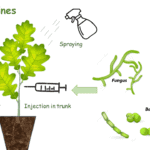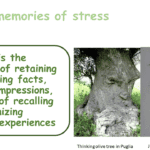Profile
Rosa Sanchez-Lucas
-
About Me:
I’m a plant doctor that study plants using an engineer point of view. I’m a Spanish researcher that moved to UK to continue studying how plants can defend themselves despite they can’t move. I have a huge number of plants at home and in my desk, so my main hobby is gardening but I also enjoy fantasy and mystery literature (Laura Gallego and Agatha Christie), embroidery, crafting, and traditional Spanish cooking.
-
Read more
At the age of 4, I knew I wanted to be a plant doctor. Having grown up surrounded by olive groves on my family farm in Andalusia, working with trees and exploring plants was going to be part of my future. My grandma has a gret green thumb so her courtyard contains a small jungle of green and bright colours. From kindergarten through high school, teachers fostered my love of science and plants. 12 years after fulfilling my goal of becoming a plant doctor, I chose to direct my education toward the technology and sciences. This honed my understanding of science and supported my passion for botany and plant physiology, and machinery ready to study a career in agricultural engineering in Cordoba 2 years later.
-
My pronouns are:
she/her
-
My Work:
I study how plants defend themselves against stresses like drought, high temperatures or diseases and insect attacks.
-
Read more
Summarising during all my professional career, I have studied the effect of stress on trees species, forest and crop trees, and how they respond through physiological and biomolecular approaches: 1) abiotic stress as drought (undergraduate), temperatures (master and PhD) and elevated CO2 concentration (current postdoc). 2) Biotic stress as oak powdery mildew, oak acutate decline and ash dieback (current postdoc). 3)Epigenetics changes caused by plant (a)biotic stresses. 4) Transgenerational inheritance of epigenetics in forest trees.
My skills and passion for tree health have taken me to a new country, before the Covid19 pandemic. This time, focusing on acute oak decline and oak powdery mildew, exploring the complexities of tree immunity under extreme conditions and the possibility to use chemicals as plant vaccines. In the aftermath of the pandemic, there is still more to learn and protecting trees is as important as ever. Like the journey from junior plant doctor to tree health expert, the response of trees to their environment is an enduring one. Understanding this interaction will last more than a lifetime. Currently, I’m studying plant memory of stress, how plants can remember stimuli and transmit this information to their progenies.
Being a plant doctor now meant combining my love of hands-on work and getting out in the field, combining my interest in botany, molecular biology and chemistry. The
temperature rises, seasonal fluctuations and intermittent droughts for both olive and oak required increasingly complex analysis to understand how trees respond to extremes in their environment. -
My Typical Day:
After my toast and coffee, I walk 30 min to arrive to the University. Then I check my mail and plan the day and take notes about meetings with colleagues and students.
I have 2 typical days: experimental days (laboratory and greenhouses) and analysis data/writing ones. Experimental days mean that I spend the day measuring, treating, make them sick and see how they respond. During the analysis and writing ones, I spend the day in front of the computer analysing the data and corroborating other researcher results to compare with mine.
Finally, I check again my unread mails, water my plants (experiments and my office ones) and go home at 6-7pm.
-
Read more
I have designed different type of experiments depending what I’m looking for. For example for the phenotype (resistant or susceptible) ones, against fungi (powdery mildew, ash dieback) or bacteria (acutate oak decline), I need to see how the plants growth with the diseases and without them. When I make them sick, I need to prepare the infection (spores or cells collection and apply on the plant, leaves or trunk). And then monitoring the disease progression during one to three months (weekly measurements). Sometimes I collect some leaves to analyse the biomolecules (chemical compounds) that are present on them to compare healthy and sick plants. Usually I work with metabolites (small molecules) and nucleic acid (DNA and RNA). These molecules give me the genetic information, its translation and the final chemical result of it.
All the data, massive datasets, need to be analyse, using informatic tools, coding related, and statistic to compare the conditions and see the relevant chemicals (genes and metabolites) involved on plant defence response.
Finally, I need to write a scientific report to be publish in journals and distribute my results, for this, I need to prepare beatiful graphics (more informatic and design tools), summarising tables and compare my results with other researchers ones.
-
What I'd do with the prize money:
I used to participate on different activities with children to perform experiments that they can reproduce at home. This year, the 18th March I will participate with a Society to perform some of these experiment for a school. Ideally, I would participate with some of the schools (if they want) to perform these experiments “hall friendly” using the price for “reagents”, seeds and why not to publish a short communication for blogs.
Some of these activities depending on the age of the groups are:
-The true colour of plants, consisting on pigments extraction from leaves, flowers and tubers. Colouring with them some plant designs (3-5) or perform a separation of the diferent colours using paper as support (cromatography based). Non toxic
-Rainbow with red cabbage, based on the capacity to change the colour depending of the acidity of the liquid mixture (bathochromic effect by pH changes). hazard for bleach and sink unblocker.
-Spherification of juice, using gelification with alginates (algae sugars) and dropping into a saline media (industrial enzyme immobilization). Non-toxic
-Cristal or mess, using copper sulfate (garden fungicide) that we will cool quickly (amorphous pieces) or slowly (cristals formation) to show how rocks and cristals are formed. ADULT SUPERVISION!!!
Parallelly, some easy quiz or the best results can gain prices (seeds, seedlings or plants) depending the grades.
-
Education:
After high school chosing the technology and sciences branch, I spent five years in Cordoba learning about the mechanics of agriculture, agricultural machinery and animal husbandry, as well as plant health. Every scientific discipline, from mathematics and physics to biology and chemistry, supported my development of skills in proteomics.
My undergraduate project’s supervisor encouraged me to specialize in plant physiology, through studies of drought stress in oak trees. Then I applied these skills to do a master’s degree, investigating the impacts of nitrogen fertilization on the resistance of olive trees to the frost. My Ph.D. explored the impact of climate change on olive trees, examining how they might be affected by an increase of 4°C above ambient temperature. I analyzed the flowering and fruit ripening of olive trees using metabolomics, transcriptomics, and genomics to understand how this temperature stress could affect harvest and olive quality.
Guided by my PhD supervisor, she made the leap from Cordoba in Spain to Birmingham to conitnue with the postdoctotal formation, to investigate the English oak’s immune responses to elevated carbon dioxide and how to use plant vaccines against plant diseases. Like the chambers surrounding the olive trees in Spain, these oaks are subjected to carbon dioxide at 150 ppm above ambient temperature.
During all this time, I have taken different courses to learn or improve teaching skills, new approaches and equipments.
-
Qualifications:
I made all my formation in Spain so the system is a quite different, specially when I studied my Degree, but let’s try…
I finish the secondary school with honor mention (A+) on Baccalaureate in natural sciences and technology. Then I studied Agricultural Engineering, speciality in Phytotechnia and Biotechnology (5 years, the equivalent to BEng+MEng) with the 3rd best national academic record (1st Class). I continued with the Master Degree in Plant Production, Protection and Breeding (1st Class). And finally the doctorate Cum Laude.
-
Work History:
In my case, I have always been working in academia, as my master, doctorate and postdoctoral period were subsequent thanks to competitive fellowships.
It is true that the doctorate ones needed close to 1 year to be resolved so I was contracted as engineer researcher 6 months to work in holm oak drought experiments.
-
Current Job:
Postdoctoral researcher in plant pathology
-
Employer:
I’m working at the University of Birmingham and at the Birmingham Institute of Forest Research. My line manager is Dr. Estrella Luna Diez with expertise on tomato and strawberry plants against fungi.
-
My Interview
-
How would you describe yourself in 3 words?
plant doctor and engineer
What did you want to be after you left school?
plant doctor
Were you ever in trouble at school?
yes, defending me and others from bulling
If you weren't doing this job, what would you choose instead?
working at a plant nursery, ormamental if possible
Who is your favourite singer or band?
Mago de Oz
What's your favourite food?
roasted sea bass
If you had 3 wishes for yourself what would they be? - be honest!
to have a plant nursery, to stop climate change, to change minds about wrong concepts on agriculture (transgenic, conventional, organic)
Tell us a joke.
what does a cactus say to a daisy? This is a difficult world, you need to adaptate....And to a rose? well done but you can improve
-








